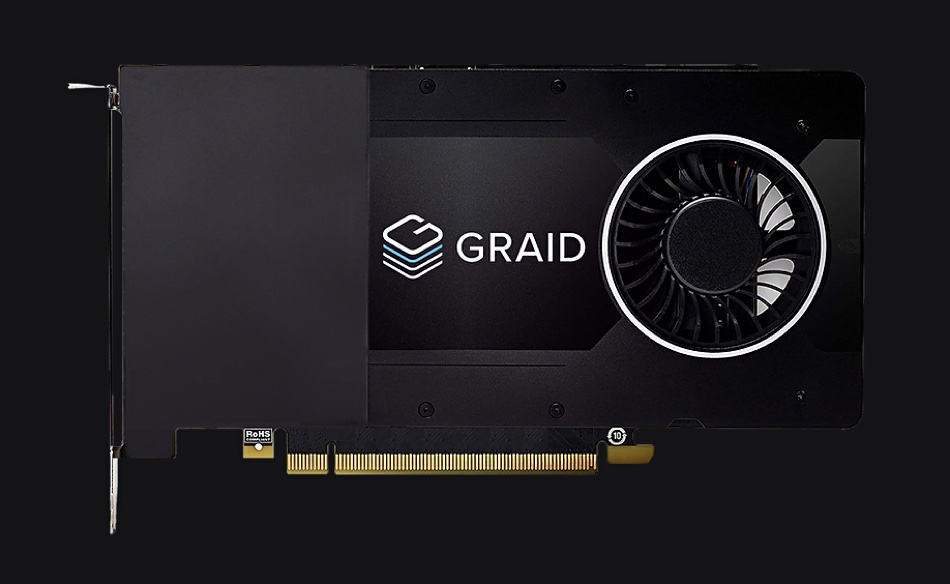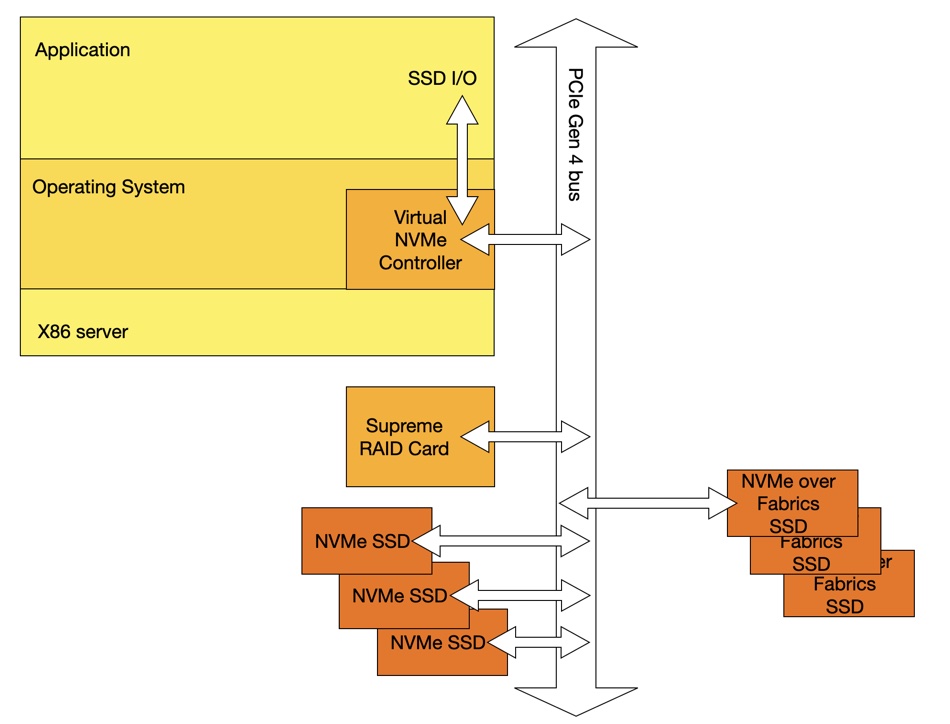Startup GRAID has designed a RAID card using a massively multi-core processor designed for AI, and says it can keep up with NVMe SSDs without sucking up host server CPU cycles.
Traditional RAID cards use an application-specific integrated circuit (ASIC) and can handle SAS and SATA disk drives pumping out 200 IOPS and around 150MB/sec of throughput, according to GRAID documentation. They also live in the data path. But an NVMe SSD can produce a million IOPS and up to 7GB/sec of throughput which more than saturates a disk drive-era RAID card.
The AI chip on GRAID’s SupremeRAID card carries out all the RAID calculations, offloading the host CPU in the same way as a SmartNIC. There is no DRAM cache on the card, hence no need for a battery backup system. As the SSDs are PCIe-connected they can be in U.2, M.2 or Add-in-Card formats — and there can be up to 32 of them per card. The RAID calculations are done out-of-band. (The card also supports SAS and SATA SSDs, although the fabric access is then not possible.)

We still need RAID to cope with SSD failure, and software RAID needs server CPU cycles. What GRAID has done is to build a supercharged RAID hardware card — its SupremeRAID SR-1000 — along with virtual NVME controller software, and hook the two up using the PCIe bus. Gen-3 and -4 PCIe buses are supported.
NVMe SSDs also hook up to the PCIe bus and there is no need for links between disk drives or SSDs and the RAID card. This design also means that the SSDs can be remote from the server and accessed across an NVMe-over-Fabrics set up.

GRAID says this is the first NVMe SSD RAID system that can also protect SSDs connected by NVMe-oF.
Supported host server operating systems are all Linux — CentOS 8.3, RHEL 8.4, Ubuntu 20.04, openSUSE Leap 15.2, and SLES 15 SP2. The card’s software is extensible and, for example, data reduction calculations could be added. The card can also play a role in composable systems — contributing NVMe-oF-accessed SSDs from a remote JBOF to a composed server.
The card’s RAID-5 performance is 6.4 million random read IOPS and 765,000 random write IOPS. Sequential throughput is 92GiB/sec reading and 10GiB/s writing — it’s massively skewed to reading. RAID-10 throughput is 100 GiB/s reading and 33GiB/s writing. (1GiB = 1.07374GB.)
A Gigabyte R282-Z94 gen-2 AMD server fitted with a PCIe gen-4 bus and 20x Kioxia CM6-R SSDs went even faster: 1.4 million random read IOPS, 350,00 random write IOPS, 6.9GB/sec sequential reads, and 4.2GB/sec sequential writes. PCIe gen-4 buses make servers fly.
Background note
GRAID Technology is headquartered in Silicon Valley, with offices in Santa Clara and Ontario, California and an R&D centre in Taipei, Taiwan. It was founded in 2020 by CEO Leander Yu and the funding status is unknown.








